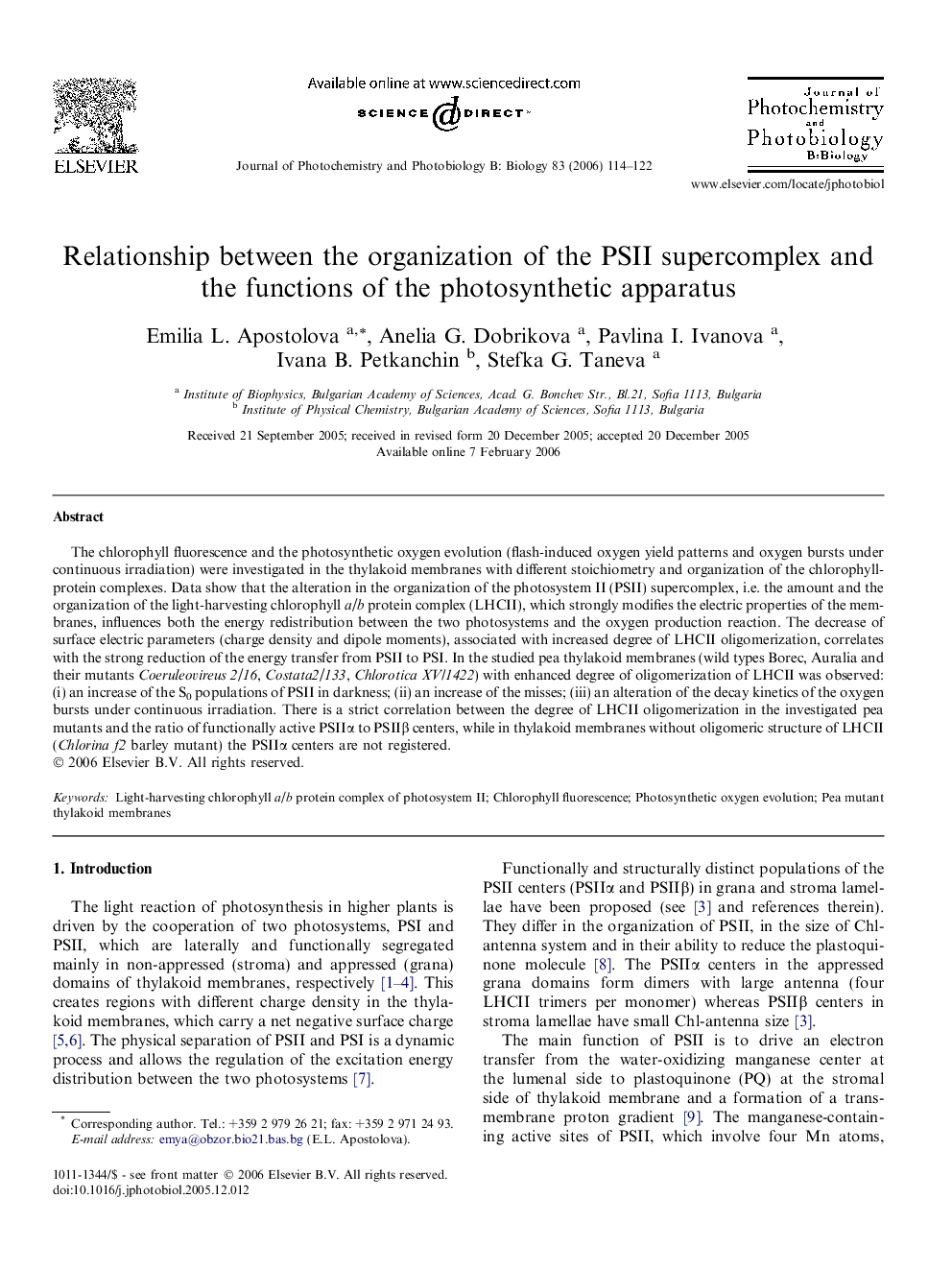| Article ID | Journal | Published Year | Pages | File Type |
|---|---|---|---|---|
| 31222 | Journal of Photochemistry and Photobiology B: Biology | 2006 | 9 Pages |
The chlorophyll fluorescence and the photosynthetic oxygen evolution (flash-induced oxygen yield patterns and oxygen bursts under continuous irradiation) were investigated in the thylakoid membranes with different stoichiometry and organization of the chlorophyll-protein complexes. Data show that the alteration in the organization of the photosystem II (PSII) supercomplex, i.e. the amount and the organization of the light-harvesting chlorophyll a/b protein complex (LHCII), which strongly modifies the electric properties of the membranes, influences both the energy redistribution between the two photosystems and the oxygen production reaction. The decrease of surface electric parameters (charge density and dipole moments), associated with increased degree of LHCII oligomerization, correlates with the strong reduction of the energy transfer from PSII to PSI. In the studied pea thylakoid membranes (wild types Borec, Auralia and their mutants Coeruleovireus 2/16, Costata2/133, Chlorotica XV/1422) with enhanced degree of oligomerization of LHCII was observed: (i) an increase of the S0 populations of PSII in darkness; (ii) an increase of the misses; (iii) an alteration of the decay kinetics of the oxygen bursts under continuous irradiation. There is a strict correlation between the degree of LHCII oligomerization in the investigated pea mutants and the ratio of functionally active PSIIα to PSIIβ centers, while in thylakoid membranes without oligomeric structure of LHCII (Chlorina f2 barley mutant) the PSIIα centers are not registered.
